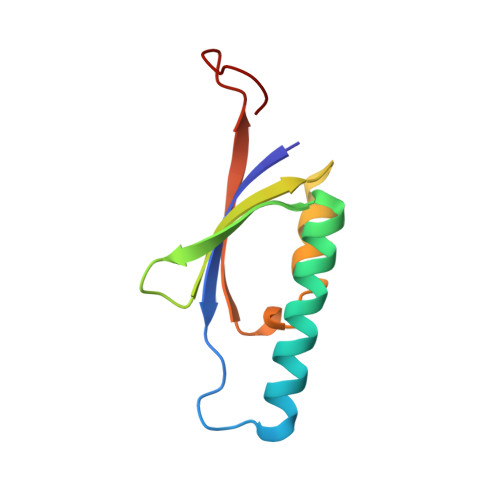X-ray crystallographic and molecular docking studies on a unique chloromuconolactone dehalogenase from Rhodococcus opacus 1CP.
Ferraroni, M., Kolomytseva, M., Golovleva, L.A., Scozzafava, A.(2013) J Struct Biol 182: 44-50
- PubMed: 23376735
- DOI: https://doi.org/10.1016/j.jsb.2013.01.006
- Primary Citation of Related Structures:
4FPI - PubMed Abstract:
5-Chloromuconolactone dehalogenase (5-CMLD) is a unique enzyme that catalyzes the conversion of 5-chloromuconolactone into cis-dienelactone in the new modified ortho-pathway of the 3-chlorocatechol degradation by Rhodococcus opacus 1CP. In all other known chlorocatechol pathways the dehalogenation is a spontaneous secondary reaction of the unstable chloromuconate intermediate following the lactonization process catalyzed by the muconate cycloisomerases. The crystallographic structure of the decameric 5-CMLD was solved by Molecular Replacement, using the coordinates of the low resolution structure of the highly homologous muconolactone isomerase, an enzyme of the conventional ortho-pathway. Muconolactone isomerase catalyzes the endocyclic rearrangement of the double bond within the lactone ring of muconolactone to yield 3-oxoadipate enol lactone. Although both 5-CMLD and muconolactone isomerase share the ability to dechlorinate 5-chloromuconolactone, 5-CMLD shows a significant degree of specialization, having lost the capacity to convert its original substrate muconolactone. The active site of 5-CMLD was previously hypothesized to reside in a deep pocket at the interface of two different subunits, on the basis of a muconolactone isomerase structure analysis. In this study we also performed molecular docking calculations that confirmed these previous findings, and allowed us furthermore to determine the residues involved in the catalytic process.
Organizational Affiliation:
Dipartimento di Chimica Ugo Schiff, Università di Firenze, Via della Lastruccia 3, I-50019 Sesto Fiorentino (FI), Italy. marta.ferraroni@unifi.it














